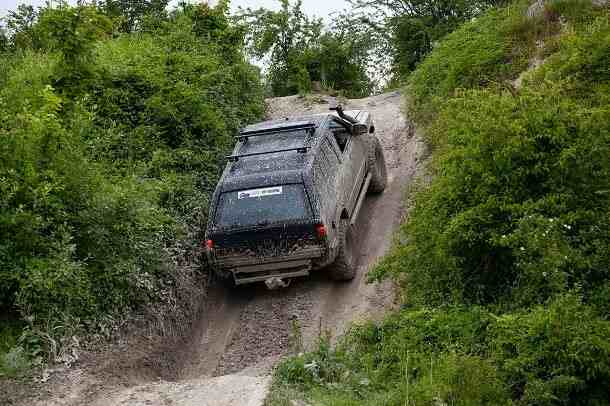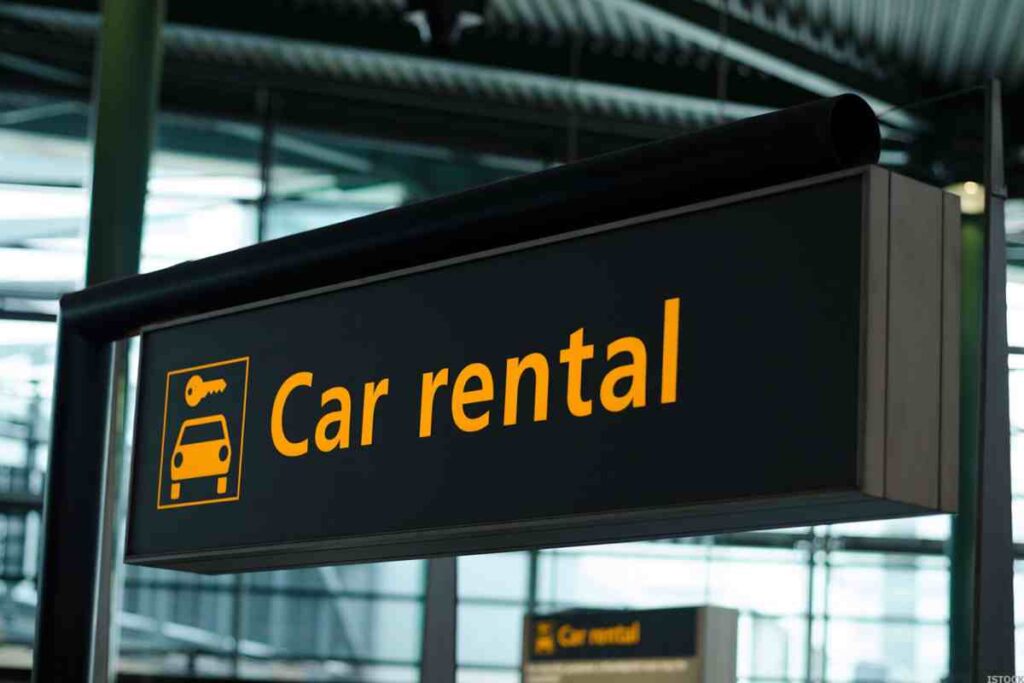The thrill of adventure is something many of us crave, especially when it comes to the call of the wild and the lure of the open, less-traveled road. Off-road driving combines excitement with challenge, but it also comes with its own set of risks and potential hazards. One question that often comes up for off-road enthusiasts is, “Does my car insurance cover off-road driving?”
Car insurance is a vital part of owning a vehicle, providing financial protection against unexpected events and accidents. But when it comes to off-road driving, the coverage can be a bit murky. In this article, we’ll explore the details of car insurance as it pertains to off-road driving, helping you understand what’s covered, what’s not, and what extra protections you might need.
Understanding Off-road Driving

Off-road driving is the act of maneuvering a vehicle over natural terrains outside of conventional paved roadways. It involves navigating through a variety of unpaved surfaces such as sand, dirt, gravel, riverbeds, mud, snow, and rocks. This form of driving can range from casual, non-competitive drives with regular vehicles to highly competitive events with specialized, modified vehicles and skilled drivers.
Off-road driving is a great way to find adventure and tackle tough terrains, but it also brings its own risks and challenges:
- Vehicle Damage: The rough terrain can cause significant wear and tear on vehicles, leading to mechanical failures or damage to the undercarriage, suspension, and tires.
- Rollovers: Uneven surfaces and steep inclines increase the risk of vehicle rollovers, which can be dangerous for the occupants.
- Getting Stuck: Vehicles can easily become stuck in mud, sand, or snow, requiring complex recovery efforts.
- Navigation Difficulties: Without clear paths, drivers can get lost or disoriented, especially in remote areas.
- Environmental Impact: Off-roading can lead to soil erosion, vegetation damage, and disturbances to wildlife habitats.
- Legal Restrictions: There may be legal limitations on where you can drive off-road, and violating these can result in fines or other penalties.
- Safety Risks: The lack of immediate assistance in remote areas and the potential for accidents due to the challenging terrain can pose significant safety risks.
To mitigate these risks, off-roaders need to be well-prepared with the right equipment, knowledge of the terrain, and respect for the environment. Proper vehicle maintenance, safety gear, and responsible driving practices are essential for a safe and enjoyable off-road experience.
Car Insurance and Off-road Driving
Standard car insurance policies are primarily designed for on-road use and typically cover accidents, theft, and other mishaps that occur while driving on public roads. However, when it comes to off-road driving, the coverage provided by these policies may not be the same.
Most car insurance policies insure drivers for “normal use,” which typically includes driving on public roads from your driveway to the highway. Off-road driving, such as driving up the side of a mountain or down ravines, is often considered outside the scope of “normal use” by many insurers. Therefore, if you take your regular, street-legal, insured vehicle off the beaten path, you might essentially be driving uninsured.
If an accident occurs while you’re off-roading, any claim you file may be denied by your insurance company. This is because off-road driving often violates the terms of standard car insurance policies. If you scratch, dent, or total your car while off-roading, you may have to cover the damage all on your own.
However, there are exceptions. For instance, if you have an off-road vehicle and have purchased specific off-road insurance for it, you would be covered for off-road driving. But a regular auto insurance policy likely won’t cover your regular car if it’s damaged while off-roading.
It’s always a good idea to check with your insurance agent to find out exactly how off-road coverage works with your insurance company. If your current policy does not cover off-road driving, you may want to consider purchasing a specific off-road insurance policy.
Off-road Insurance Coverage
Off-road insurance coverage is a specialized form of auto insurance designed to protect vehicles that are operated off traditional, paved roads. This type of insurance is essential for vehicles that are driven on rugged terrains, such as Jeeps, trucks, and other all-terrain vehicles (ATVs), including snowmobiles, golf carts, and dirt bikes. Here’s a breakdown of what off-road insurance typically covers:
- Bodily Injury Liability: This covers injuries that you, as the policyholder, may cause to someone else while driving your off-road vehicle.
- Property Damage Liability: This covers damage that you may cause to another person’s property while operating your off-road vehicle.
- Collision Coverage: This helps pay for damage to your off-road vehicle if it collides with another vehicle or object.
- Comprehensive Coverage: This protects against theft, fire, vandalism, and other types of damage to your off-road vehicle, even while it’s in storage.
- Uninsured/Underinsured Motorist Coverage: This can offer protection if you’re involved in an accident with a driver who does not have insurance or does not have enough insurance.
- Medical Payments/Personal Injury Protection: This can help cover medical expenses for you and your passengers in case of an accident.
It’s important to note that off-road insurance policies may have specific exclusions, such as damage caused during racing or competitive events. Additionally, off-road coverage is distinct from standard auto insurance policies, which typically insure drivers for “normal use” and may not cover off-road activities. Therefore, it’s crucial for off-road enthusiasts to carefully review their insurance policies and ensure they have the appropriate coverage for their off-roading adventures.
Coverage Limitations and Exclusions
When considering off-road insurance policies, it’s important to understand their limitations and exclusions. Here are some common ones:
- Vehicle Restrictions: Some policies may only cover specific types of vehicles designed for off-road use, such as ATVs, dirt bikes, or off-road trucks. Standard cars or trucks might not be covered.
- Designated Areas: Policies may limit coverage to designated off-road areas or trails. Driving off designated paths or in unauthorized areas could void coverage.
- Racing or Competitive Events: Most off-road insurance policies exclude coverage for racing or participating in competitive events. This includes organized races, rallies, or competitions.
- Intentional Damage: Damage caused intentionally, such as reckless behavior or deliberate misuse of the vehicle, is typically not covered.
- Wear and Tear: Normal wear and tear from off-road use, including mechanical breakdowns or damage due to rough terrain, may not be covered.
- Personal Injury Exclusions: Some policies may exclude coverage for personal injuries sustained during off-road activities. Injuries to passengers or yourself might not be covered under the vehicle insurance policy.
- Unapproved Modifications: If your vehicle has been extensively modified for off-road use, such as lift kits or aftermarket parts, ensure that these modifications are approved by your insurer. Unauthorized modifications may invalidate coverage.
- Negligence and Recklessness: Coverage may be denied if an accident occurs due to negligence or reckless behavior while off-roading. This could include driving under the influence, excessive speeding, or ignoring safety guidelines.
It’s crucial to carefully review the terms and conditions of your off-road insurance policy to understand what is and isn’t covered.
Cost of Off-road Insurance
The cost of off-road insurance can vary widely based on several factors. Here are some key points to consider:
- Type of Vehicle: The make, model, and age of your off-road vehicle will influence the insurance cost. Specialized off-road vehicles like ATVs or dirt bikes may have different rates compared to modified trucks or SUVs.
- Usage: How often and where you use your off-road vehicle can affect the price. Frequent use or driving in high-risk areas might increase premiums.
- Driver’s Record: Your driving history, including any past claims or violations, can impact the cost of insurance. A clean record may help lower rates.
- Location: Insurance costs can also depend on your location, taking into account the terrain and local regulations.
- Coverage Options: The level of coverage you choose, such as liability, collision, or comprehensive, will determine the final cost. Higher coverage limits lead to higher premiums.
- Discounts: Some insurers offer discounts for safety courses, multiple policies, or storing the vehicle securely when not in use.
- Insurance Provider: Different insurers have varying rates, so it’s beneficial to shop around and compare quotes.
As a general idea, insuring an ATV, UTV, or similar off-road vehicle can start as low as approximately $7 per month, but this is a base rate and your specific cost could be higher based on the factors mentioned above.
How to Choose the Right Off-road Insurance
Choosing the right off-road insurance requires careful consideration of several factors. Here are some tips to help you make an informed decision:

- Understand Your Needs: Assess how you intend to use your off-road vehicle. The frequency, location, and type of off-roading activities you engage in can influence the type of coverage you need.
- Know Your Vehicle: The make, model, and modifications of your off-road vehicle can affect your insurance needs and premiums. Ensure your policy covers any custom parts or equipment.
- Compare Policies: Don’t settle for the first policy you find. Compare different policies, their coverage, and premiums. Look at the fine print for any exclusions or limitations.
- Consider Additional Coverage: Depending on your needs, you might want to consider additional coverage options such as bodily injury liability, property damage, and medical payments.
- Check the Claims Process: Understand the insurer’s claims process. Check how claims are filed, how they are processed, and the average time it takes to settle a claim.
- Consult an Insurance Agent: An independent agent can help you compare quotes from several different insurance companies and choose the right coverage for your needs.
- Read Reviews: Look at reviews and ratings for the insurance company. This can give you an idea of the company’s customer service and satisfaction levels.
Claim Process for Off-road Incidents
Filing a claim for an off-road incident involves a series of steps that are similar to the standard car insurance claim process, with some specific considerations for off-road activities. Here’s a step-by-step guide to help you navigate the claims process:
- Safety First: Ensure that everyone involved is safe. If there are injuries, call emergency services immediately.
- Document the Incident: Take photos of the scene, the damage to your vehicle, and any relevant terrain features that may have contributed to the incident. Collect as much evidence as possible.
- Notify Your Insurer: Contact your insurance company as soon as possible to report the incident. Provide them with all the details and evidence you’ve collected.
- Claim Evaluation: An insurance adjuster will be assigned to evaluate your claim. They may visit the site of the incident or review the evidence you’ve provided to assess the damage and determine coverage.
- Policy Review: The adjuster will review your policy to check for specific off-road coverage, exclusions, or limitations that may apply to your claim.
- Repair and Reimbursement: If your claim is approved, your insurer will guide you through the repair process or reimburse you for covered damages, depending on your policy terms.
- Dispute Resolution: If your claim is denied or you disagree with the settlement, you can dispute the decision. This may involve providing additional evidence or negotiating with the insurer.
Why is Rideshare Insurance So Expensive?
Remember, the specifics of the claims process can vary depending on your insurance provider and policy.
Legal Considerations and Compliance
Legal considerations and compliance are crucial aspects of off-road driving. Here are some key points to keep in mind:
1. Laws of Land
- Before embarking on an off-road adventure, it’s essential to determine whether the land you plan to explore is private or government-owned.
- If the land is private property, seek permission from the owner before off-roading.
- For government-owned land, contact the local administrative unit to verify the permissibility of off-roading.
- Going off-road without checking the laws or without permission on privately owned land may result in arrest or fines.
2. Laws of Driving
- Understand the rules and regulations specific to off-road driving in your area.
- Ensure your off-road vehicle complies with local requirements, including registration, insurance, and safety certificates.
- Display any necessary trail passes visibly on your vehicle.
- Ignoring these legal considerations can lead to legal consequences.
3. Insurance Requirements
- The law varies from state to state. In some states, it may be acceptable to drive off-road vehicles without insurance on private property.
- However, once the vehicle ventures onto public roads, insurance coverage becomes necessary.
- Ensure your off-road vehicle has active insurance to comply with legal requirements.
4. Safety and Environmental Compliance
- Adhere to trail regulations and respect the environment. Avoid damaging natural habitats or causing erosion.
- Comply with regional motor power and speed limits for off-road vehicles.
- Familiarize yourself with helmet laws if applicable.
- Prioritize safety and responsible off-roading practices to stay within legal boundaries.
Remember, laws and regulations can vary greatly depending on your location and the specific circumstances of your off-road driving.
FAQs
Q 1. What types of vehicles are covered under off-road insurance?
Ans. Off-road insurance typically covers a wide range of vehicles designed for off-road use, including ATVs (All-Terrain Vehicles), UTVs (Utility Task Vehicles), dirt bikes, snowmobiles, golf carts, and certain types of modified trucks and SUVs.
Q 2. Can I add off-road coverage to my existing car insurance policy?
Ans. This depends on your insurance provider. Some providers may allow you to add off-road coverage to your existing policy, while others may require you to purchase a separate off-road insurance policy.
Q 3. Does off-road insurance cover accessories and modifications?
Ans. Yes, many off-road insurance policies offer coverage for accessories and modifications. However, you’ll need to declare these when you take out your policy, and they may increase the cost of your premium.
Q 4. Are there any discounts available for off-road insurance?
Ans. Yes, many insurance providers offer discounts for things like being a safe driver, having multiple policies with the same company, or completing a safety course. Check with your insurance provider to see what discounts they offer.
Q 5. How does the deductible work with off-road insurance?
Ans. The deductible is the amount you pay out-of-pocket before your insurance coverage kicks in. For example, if you have a $500 deductible and you have a claim that costs $2,000, you would pay the first $500 and your insurance would pay the remaining $1,500.
Q 6. Can I cancel my off-road insurance during off-season when I’m not using my vehicle?
Ans. Some insurance providers may allow you to suspend or reduce your coverage during the off-season when you’re not using your vehicle. However, keep in mind that even when stored, your vehicle could still be at risk from things like theft or damage, so it’s worth considering keeping some level of coverage.
Conclusion
Off-road driving is a thrilling activity that combines adventure with challenges. However, it does come with its own risks and potential hazards. Regular car insurance usually doesn’t cover off-road driving, so it’s important for off-road enthusiasts to look into specialized off-road insurance.
Getting to know the details of off-road insurance—what it covers and how much it costs—can help you make smart decisions and ensure you’re well-protected. It’s also important to be aware of the legal aspects and compliance requirements involved in off-road driving.

Join Shubham, a finance enthusiast with a mission to empower readers with the knowledge and tools to achieve financial freedom. Discover smart financial advice and unlock your financial potential.


